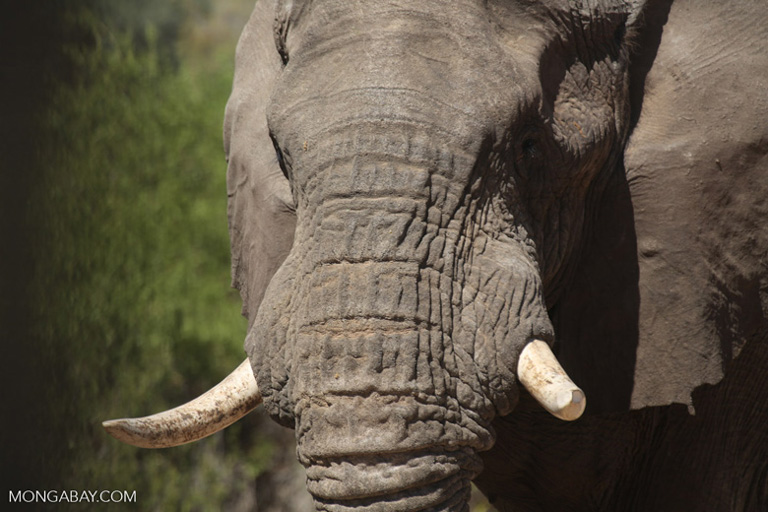- Officials confiscated 12.5 kilograms (27.6 pounds) of South African rhino horn on Dec. 12.
- The seizure led to the arrest of a member of the Bach family, which is suspected of running a wildlife trafficking syndicate from Thailand.
- The NGO Elephant Action League provided Thai authorities with information that led to the arrest, as well as that of another wildlife trafficking ‘kingpin’ in December.
Thai authorities seized 12.5 kilograms (27.6 pounds) of rhino horn from South Africa in December, leading to the arrest of a key figure in Southeast Asia’s illicit wildlife trade.
“[This] specific ring of traffickers that we took down is behind the smuggling of at least 56.5 kg [124.6 pounds] of rhino horn from South Africa in the past four months,” Andrea Crosta, who directs the Elephant Action League, said in a statement. That amount of rhino horn could fetch $2 million or more in Chinese markets that lie beyond the reach of enforcement agencies.
EAL teamed up with Thai customs and police after officials seized the rhino horn, which is prized for its role in traditional medicine in China and other parts of Asia, and arrested two people on Dec. 12. Research by EAL, a U.S.-based NGO that investigates wildlife crime, then linked the confiscated shipment of rhino horn to the Bach family.

As a result of this connection, police arrested a man named Bach Van Hoa.
According to a 2016 article in the Guardian, two Bach brothers, Bach Mai and Bach Van Limh, run their operation out of a town on the Mekong River called Nakhon Phanom in Thailand. From there, the group can transport rhino horn, as well as other illegally traded goods such as elephant tusks, across the river and through a narrow section of Laos for shipment to Vietnam and China.
The trade in rhino horn has been illegal in China since 1993, and as of Jan. 1, 2018, China has shuttered its legal ivory trade as well. Trade in body parts of both animals is seen as a major cause of their precipitous slide toward extinction.
In the statement, EAL said that apprehending a member of the Bach family is evidence that collaborations with local law enforcement can interfere with the illegal trafficking of wildlife products.
“These arrests and operations should have a ripple effect back to Africa and Indonesia, from where these wildlife criminal networks get their products,” EAL said in the statement. “Part of the work of EAL is to make the lives of the primary buyers and brokers of wildlife products much more difficult.”

In December, EAL was also involved in helping Thai police capture Kampanart Chaiyamart, a “kingpin” who is suspected of trading not just ivory and rhino horn, but also pangolins, orangutans and illegal timber. Crosta said that these efforts are only the beginning.
“The work is far from over as EAL and our partners will be working to fully disrupt these trafficking networks for many months – maybe even years,” he said.
Banner image of a white rhino in South Africa by Rhett A. Butler/Mongabay.
FEEDBACK: Use this form to send a message to the author of this post. If you want to post a public comment, you can do that at the bottom of the page.
